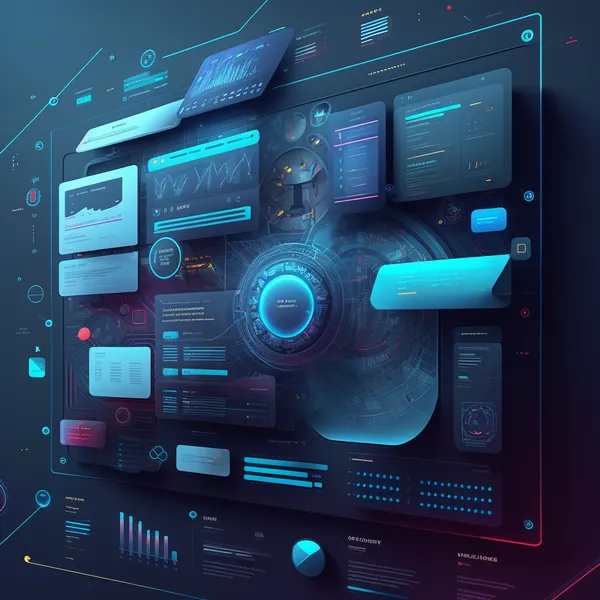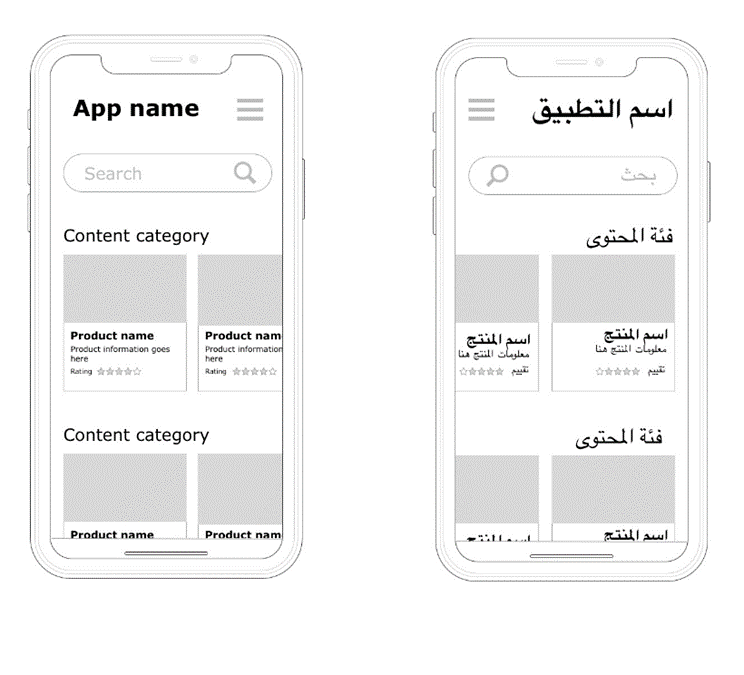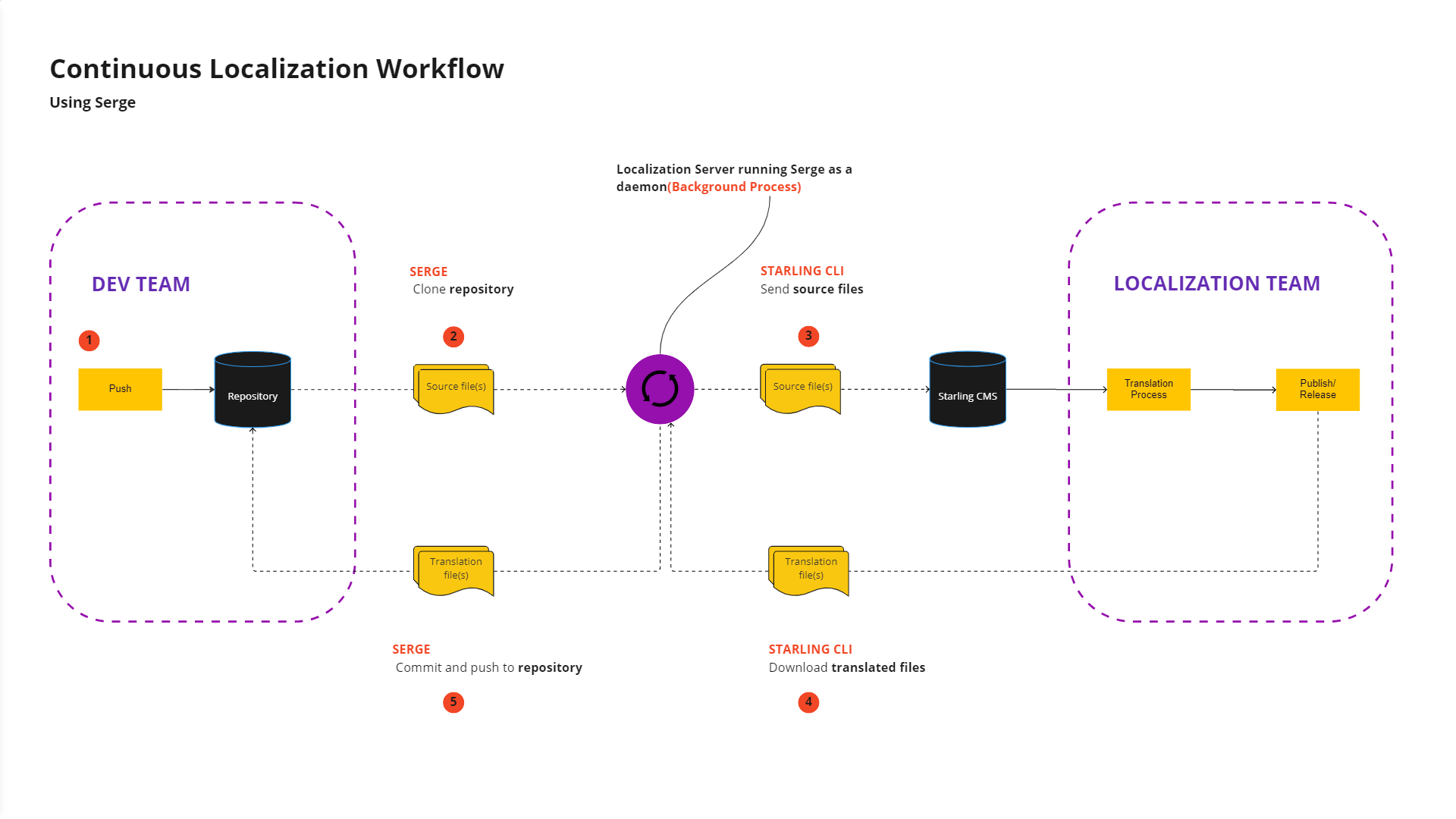Before delving into the SaaS localization’s many benefits and key challenges, we must first set some basic definitions. Bear with us; we will make it quick.
What is SaaS Localization?
Software-as-a-service localization is the adaptation of the content and code of a software service to meet the needs (linguistic or otherwise) of a target market.
If that doesn’t make sense to you, we can think of an example. Let’s imagine you are the proud creator of a new fitness app. You designed it for the region “A,” and this region has the following characteristics:
- The users speak English.
- They love hardcore strength training.
- They are willing to buy supplements to support their training.
- The nutritional advice they seek is around optimizing growth.
After a while, you obviously had a massive amount of success. So in proper capitalistic spirit, you decide to expand to a new region (B). But this one has different characteristics:
- The users speak Spanish.
- They focus on improving their health.
- They love “healthy” foods, non-GMO and organic products.
- They may pursue weight-loss goals.
An effective localization strategy will have to take into account all of the above. You will need to translate your content and change it to match the expectations and needs of your new users. You will also need to change your pricing strategy.
It’s a lengthy process but well worth the rewards.
Why is SaaS localization important for internet companies?
SaaS localization is essential because it expands the company’s reach to markets that otherwise remain out of reach. After all, language is the first bridge you must overcome before convincing a customer of your value.
You might believe that English is enough. After all, isn’t it the international language? Well, that may have been true in the past, but it’s increasingly not the case.
Although English is used by over 60% of internet users, some of your customers will be from non-English speaking countries, with limited to non-existent fluency. They will need a translation tool to understand the content on your webpage.
You might still be inclined to believe that you don’t need such a small segment and that it’s not worth the investment. But you ought to remember that even among your existing customers who speak English as a second language, they still prefer to read and digest information in their native languages.
On top of that, more than 70% of consumers spend time on websites in their native language. And roughly 40% will only buy products or services in a language they understand. As an internet company, SaaS localization should be on your priority list.
Saas Localization: The 5 Ultimate Benefits
There are 5 vital benefits of SaaS localization that you should leverage:
- Improves user experience (UX).
- Increases your company’s global reach.
- More potential partnerships.
- Increased visibility.
- Increases revenue.
1. Improved user experience (UX)
SaaS localization can increase your consumers’ user experience. When using software services, all text-related elements on the user interface (UI) are seen as customer touch points. By translating the content into the appropriate language, you can increase your software’s navigability.
It’s not just about improving readability. A localized UI sends a message. It says that you, as a company, value this customer segment and you’re willing to invest time and money to provide them with an excellent UX.
You can also get ahead of some customer problems. By using a non-native language on your program, your users may misunderstand how your features function, leading to confusion. And what do users do when they feel confused? They typically close the app and avoid using it—not the outcome you hope for.
For example, Chinese characters can have up to three or four meanings, and regular software applications without a localization process could easily lead to frustration. Localizing your SaaS allows your customers to get a personalized service, avoiding cultural taboos or mishaps. It increases the overall readability and usability of your cloud-based software systems.
2. Expanded reach
You can expand your reach substantially by localizing your SaaS into a few core languages. For instance, if you translate your platform into Chinese, Spanish, Arabic, Portuguese, French & Russian, you can easily cover 2+ billion people.
Of course, picking the languages you need also depends on your target markets. For instance, if you are a fintech provider that allows/provides crypto-trading, translating your platform into Chinese may be unnecessary, considering that crypto is illegal in mainland China.
3. More partnership
SaaS localization shows the professionalism and digital capabilities of your offering across markets. It can be a strong differentiator for your services. You can use this flexibility to attract partnerships and leverage them across markets—including your base market.
For instance, CD PROJEKT, a famous gaming company, has successfully localized its key games in mainland China. To do so, they partnered with powerful community managers and leveraged unique local social media (Bilibil, Weibo, etc.).
In doing so, there is little doubt that they learned effective marketing tactics and how to aggressively expand in an Asian market. Their newfound expertise can be easily leveraged to expand into other Asian markets such as Malaysia, Singapore, Hong Kong, and Taiwan.
4. Increased visibility
As an internet business owner, product localization can expand your potential target customers to a much wider area without losing your existing target base.
One of the most important reasons for that is that customers usually browse through search engines using their native languages. As such, the keywords they use are also in their native languages. If your SaaS platform is localized into multiple versions, it increases its odds of appearing in your target’s search results.
Furthermore, by relying on software localization services, you can bypass extensive SEO efforts and outsource most of that process cost-effectively.
5. More revenue
As you can imagine, by increasing your visibility and global reach, you will likely generate a lot more revenue and, ultimately, profits. But that’s not our opinion alone (after all, we may be biased). Let’s look at CD PROJEKT again.
Consider the case of CD PROJEKT, a Polish gaming company. In 2007, they released their first title, the Witcher, in a single language. Fast forward to today, and the company’s two major titles, the Witcher 3 and Cyberpunk 2077, have been released in 16 and 24 different languages, respectively. In 2022 alone, their hit game sold 40+ million copies, of which only 2.5 million were sold in their home market, Poland. That’s a 16x increase!
Considering that they took the time to localize their game into 24 different languages, it’s safe to say that their localization strategy is working.
Selling software as a service can be made substantially easier by leveraging the power of localization.
What are some common challenges for SaaS localization?
UI layout issues
One of the key concerns during SaaS localization is the differences in script size between some languages. For example, when translating “localization UI” from English to Russian, you may run into this issue:

As you can see in the picture above, Cyrillic script takes more space than Latin script. In fact, if you look at the one below, we’ve drawn a square representing a hypothetical button. As you can see, the text clearly doesn’t align with the button.

It’s safe to say that errors like this one can quickly reduce your software’s credibility and may turn off your users.
It’s not just size either; direction matters too.
You may be used to reading from left to right, but some languages do it from right to left. For example, Arabic and Hebrew are two famous languages that require special attention.
That’s why it is essential to take time and carefully plan which target market you intend to enter and understand its specificities quite well. A professional software localization process can help you avoid these layout-related issues before you launch your product and risk dealing with costly problems down the line.
Misinterpreting context
When translators or designers are not familiar with the background of the target language, the context cannot be localized accurately. All the translated information should be done with purpose, and the target audience’s habits should be at the forefront of your work.
All the relevant information should be based on appropriate market research to guarantee a well-localized product. If you don’t take your time to learn about your target market, it will most likely affect your product quality. You may have to patch some parts of your software, affecting your time to market entry.
Considering the sheer depth of the requirements, you may not have the necessary expertise, and relying on a professional localization services provider is typically a good idea.

Delayed launches
Due to the cloud-based nature of your software, every new patch requires simultaneous localization. However, when the size of the said update is too large, it may cause some delays.
Launch delays are more likely to happen at the beginning stages of the localization. You may have yet to fully set up your localizing processes and may need more resources to tackle your needs as quickly as possible.
What are some best practices for SaaS localization?
SaaS and software localization best practices are very similar. They need a thorough understanding of the market and the implementation of style guides. But, with one big difference. The need for continuous localization is more important in the case of SaaS localization.
Marketing research
It is vital to ensure that you thoroughly understand the markets you intend to enter before you decide to localize your software platform. This understanding is not limited to which language your target users prefer. It includes their browsing habits, cultural preferences, societal taboos, etc.
Of course, to gain such a granular level of knowledge on your target, research is vital. Language services providers are typically already familiar with your targets. However, suppose you intend to do all the SaaS localization work in-house. In that case, you should consider hiring a marketing research firm.
Format guide
You must have a style guide for your professional localization team. For instance, different languages can have other formats for their currency, date, and time. It is advisable to have a style guide and a format guide that translators can use, as it can drastically reduce error rates.
For designers, the format guide would emphasize factors such as the preferred color of different cultures, differences in sentence structure, and text length. As a result, efficiency and consistency can be improved during the localization process.
Continuous localization
Continuous localization truly shines with SaaS offerings. The ability to do your localization, not in batches but continuously, is uniquely valuable. This way, localization can happen in parallel with software development, keeping the pace of every new patch.
Usually, traditional localization requires developers, translators, and project managers to work step-by-step. In other words, only when one batch of content is localized and launched that you can start working on the second batch. It’s a basic rinse-and-repeat process.
On the other hand, with continuous localization, there is no need for translators to wait. They can be involved at the same time as the development team. There will be an automatic software system that can be used at the same time by all members of the localization team. This creates a more effective process; it avoids delayed launches and helps your business adapt quickly to new market demand.
If this topic interests you, check out our article on continuous localization using popular platforms. It covers the basics with guided steps.
Software as a service (SaaS) is software provided to the user as a service rather than a product. Typically, SaaS is hosted in the cloud and can be delivered to any individual or company with an internet connection.
Our software as a service definition includes a key aspect—ownership. Unlike other older software, when you purchase a Saas, you do not own it. You simply get access to its functions and features for a predetermined duration, depending on which plan you paid for.
There are many different examples of software as a service. For instance, Semrush is a Saas. To access Semrush, you must buy a subscription plan through its site.
Google Docs is an example of software as a service. Although free, it does not have a stand-alone version that you can install on your computer.
Here is a non-exhaustive list of common software-as-a-service that you may know:
- ChatGPT.
- Notion.
- Copilot.
- Ahrefs.
- Midjourney.
- Figma.
- WordPress.
And many more

Author:
Yifan Lu
One of Transphere’s most energetic minds, Yifan Lu is a young marketer with a deep love for basketball and the legendary Kobe.

Editor:





